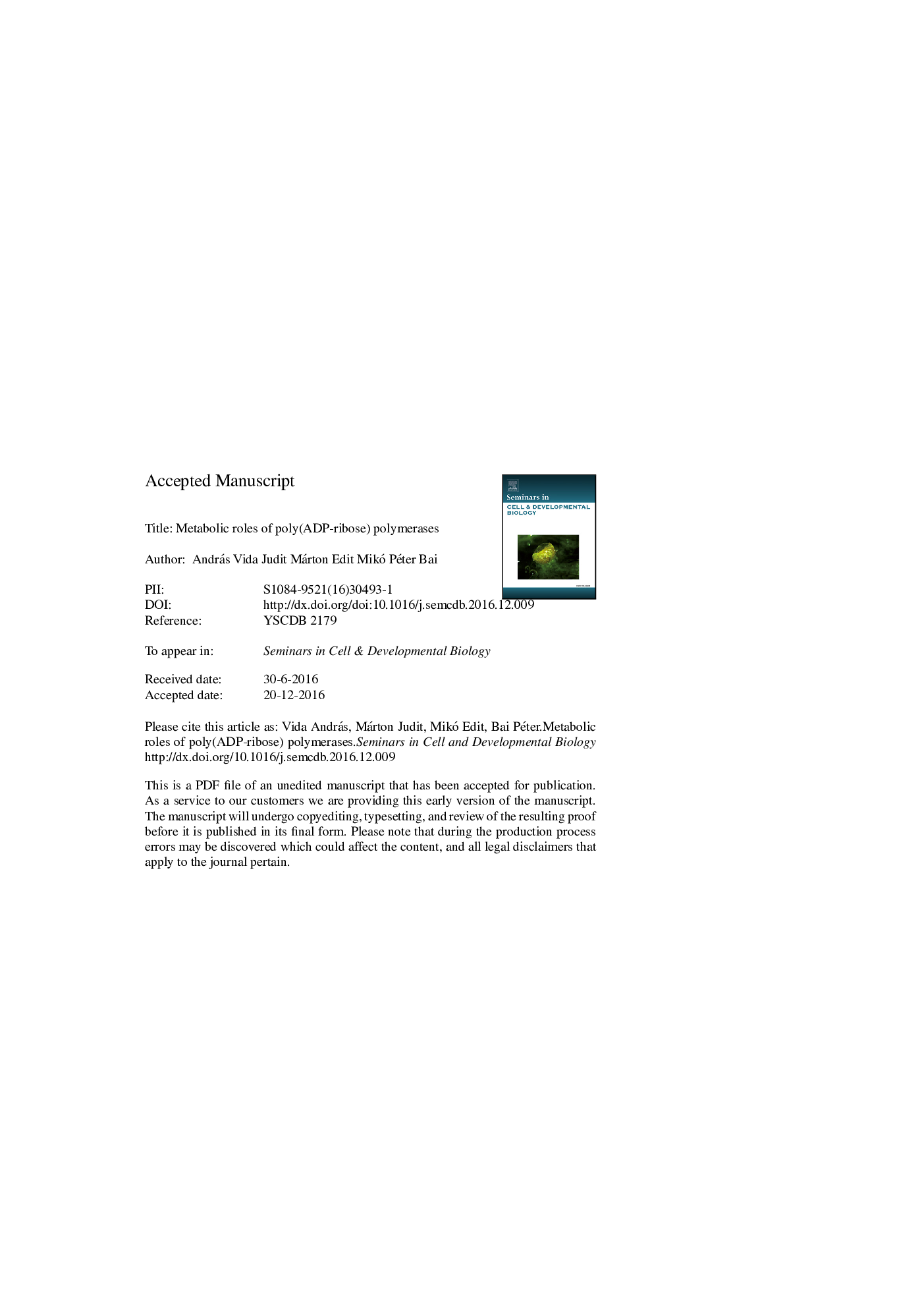| Article ID | Journal | Published Year | Pages | File Type |
|---|---|---|---|---|
| 5534957 | Seminars in Cell & Developmental Biology | 2017 | 27 Pages |
Abstract
Poly(ADP-ribosyl)ation (PARylation) is an evolutionarily conserved reaction that had been associated with numerous cellular processes such as DNA repair, protein turnover, inflammatory regulation, aging or metabolic regulation. The metabolic regulatory tasks of poly(ADP-ribose) polymerases (PARPs) are complex, it is based on the regulation of metabolic transcription factors (e.g. SIRT1, nuclear receptors, SREBPs) and certain cellular energy sensors. PARP over-activation can cause damage to mitochondrial terminal oxidation, while the inhibition of PARP-1 or PARP-2 can induce mitochondrial oxidation by enhancing the mitotropic tone of gene transcription and signal transduction. These PARP-mediated processes impact on higher order metabolic regulation that modulates lipid metabolism, circadian oscillations and insulin secretion and signaling. PARP-1, PARP-2 and PARP-7 are related to metabolic diseases such as diabetes, alcoholic and non-alcoholic fatty liver disease (AFLD, NAFLD), or on a broader perspective to Warburg metabolism in cancer or the metabolic diseases accompanying aging.
Keywords
AMPKPI3KSCDmTORFOXO1ERKNRFANTHMGCRLDLRABCA1PPARADPSIRTsirtuinGLP-1GSK3PGC-1αPARPHIFMTPADPRPDX-1LXRRARRXRSREBPACLYATP citrate lyaseAFLDFDPsADP-riboseACACAEPHX1ATP-binding cassette sub-family A member 1ME2Nr4aARH3ARTDNUDIXPARPiAMP activated kinaseACBD3PARG3-Hydroxy-3-methylglutaryl-coenzyme A synthaseNAFLDHMGCSperoxisome proliferator-activated receptor gamma coactivator 1-alpha3-Hydroxy-3-Methylglutaryl-coenzyme A reductaseDNAPancreatic and duodenal homeobox 1Poly(ADP-ribosyl)ationadenosine diphosphateAIFacetyl-CoA carboxylase alphadeoxyribonucleic acidRNAribonucleic acidmicro-ribonucleic acidFatty acidfatty acid synthaseWAT, White adipose tissueDiabetesalcoholic fatty liver diseasenon-alcoholic fatty liver diseaseadenine nucleotide translocasetriglycerideParperClockapoptosis inducing factorNuclear respiratory factorfarnesyl diphosphate synthaseHypoxia-inducible factorFasnPhosphatidylinositol 3-kinaseMetabolismObesityMitochondrial transition poreMitochondriaMiRNANADNor-1NAD, nicotinamide adenine dinucleotideMechanistic target of rapamycinMicrosomal epoxide hydrolasePARylationForkhead box protein O1Poly(ADP-ribose)Poly(ADP-ribose) polymeraseglucagon-like peptide-1circadian locomotor output cycles kaputWATliver X receptorextracellular signal-regulated kinaseCrypoly(ADP-ribose) glycohydrolaseglycogen synthase kinase-3Estrogen receptorRetinoic acid receptorretinoic X receptorlow density lipoprotein receptorthyroid hormone receptorProgesterone receptor
Related Topics
Life Sciences
Biochemistry, Genetics and Molecular Biology
Cell Biology
Authors
András Vida, Judit Márton, Edit Mikó, Péter Bai,
